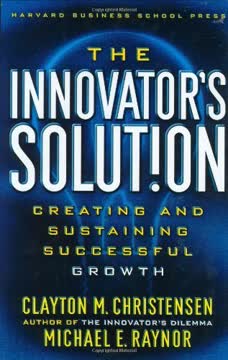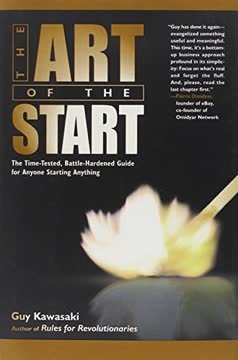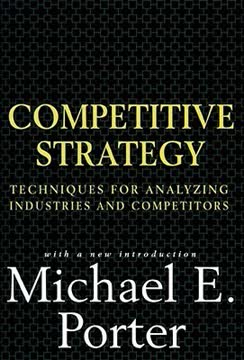重点摘要
1. 客户开发对初创企业成功至关重要
客户开发的目标不是从潜在客户那里收集功能列表,也不是进行大量的焦点小组。
重新思考传统产品开发。 客户开发模型挑战了先构建产品再寻找客户的传统智慧。相反,它强调在完全开发产品之前,先了解和发现客户及其问题。这种方法减少了构建无人需要的产品的风险。
四步流程。 客户开发模型包括四个步骤:
- 客户发现:了解客户问题和需求
- 客户验证:开发可重复的销售流程
- 客户创造:生成终端用户需求
- 公司建设:过渡到正式组织
通过遵循这一流程,初创企业可以在扩大规模之前验证其商业模式和产品市场契合度,从而显著提高成功的机会。
2. 市场类型决定策略和执行
市场类型改变了一切——如何评估客户需求和客户采用率,客户如何理解其需求以及如何将产品定位给客户。
四种市场类型。 初创企业通常属于以下四类之一:
- 进入现有市场
- 创建全新市场
- 作为低成本进入者重新细分现有市场
- 作为利基玩家重新细分现有市场
量身定制的策略。 每种市场类型需要不同的客户获取、销售、营销和财务预测方法。例如,在现有市场中,重点是产品差异化和市场份额的获取。在新市场中,优先考虑的是教育客户和创造需求。了解你的市场类型对于制定适当的策略和设定现实的增长和盈利预期至关重要。
3. 客户发现验证产品市场契合度
客户开发的目标是看看是否有客户和市场对这一愿景感兴趣。
走出办公室。 客户发现的第一步是测试你关于客户问题和拟议解决方案的假设。这涉及直接与潜在客户接触,了解他们的需求、工作流程和痛点。目标不是销售,而是倾听和学习。
迭代过程。 客户发现不是线性的,而是迭代的。它包括:
- 关于客户及其问题的假设
- 通过客户互动测试这些假设
- 根据反馈完善产品概念
- 重复这一过程直到实现产品市场契合度
这一阶段帮助初创企业避免构建不解决实际紧迫客户需求的产品的昂贵错误。
4. 客户验证证明商业模式
测试假设的唯一有效方法是销售产品。
制定销售路线图。 客户验证专注于创建可重复的销售流程。这包括:
- 识别并销售给早期采用者(早期布道者)
- 制定定位策略
- 创建销售路线图
- 通过实际销售验证商业模式
转向或继续。 这一阶段的结果至关重要。如果找不到可重复的销售流程或商业模式不盈利,就需要转向并返回客户发现阶段。只有当你有了经过验证的、可重复的销售流程时,才应该继续扩大规模。
5. 客户创造驱动需求并扩大销售
市场类型不仅决定了这一过渡将如何发生,还决定了所需的人员配置、招聘和支出类型。
市场特定策略。 客户创造策略根据市场类型而有所不同:
- 现有市场:专注于产品差异化和积极营销
- 新市场:强调客户教育和市场创造
- 重新细分市场:通过定位和品牌突出你的独特价值主张
跨越鸿沟。 这一阶段解决了从早期采用者到主流市场的挑战。它包括:
- 制定适当的营销和销售策略
- 创建和执行发布计划
- 扩大需求创造活动
关键是将你的需求创造努力与市场类型和市场采用阶段相匹配。
6. 公司建设过渡到以使命为中心的组织
创建快速响应部门是从学习和发现阶段到大公司所需的职能部门的自然演变。
发展组织。 随着公司的成长,需要从最初的客户开发团队过渡到更结构化的组织。这包括:
- 创建职能部门(销售、营销、业务发展)
- 发展以使命为中心的文化
- 在保持敏捷性的同时实施流程
平衡结构和灵活性。 挑战在于构建一个能够扩展的组织,同时保留初创企业的速度和适应性。这需要在实施必要流程和保持推动初始成功的创业精神之间找到平衡。
7. 快速响应部门在规模上保持敏捷性
谁能始终如一地更快做出并实施决策,谁就能获得巨大的、往往是决定性的优势。
OODA循环。 快速响应部门使用OODA循环(观察、定位、决策、行动)来保持敏捷性:
- 观察:快速高效地收集信息
- 定位:在公司使命的背景下分析和综合信息
- 决策:做出快速、分散的决策
- 行动:迅速有效地执行决策
分散决策。 为了保持速度和灵活性,授权员工在组织的各个层级做出决策。这需要:
- 清晰传达公司的使命和目标
- 信任员工的判断
- 形成重视主动性和从错误中学习的文化
通过实施这些原则,公司即使在成长过程中也能保持初创企业般的敏捷性。
8. 创始人必须随着公司成长阶段而进化
讽刺的是,正当投资者需要保持公司的势头和灵活性以吸引主流客户时,他们却因替代官僚主义而绊倒,而企业家则未能适应他们所创造的成功。
领导力进化。 创始人必须随着公司成长调整其领导风格:
- 早期阶段:专注于学习和发现的愿景型、亲力亲为的领导
- 成长期:过渡到以使命为中心的管理,更多地委派责任
- 扩展阶段:在保持创业精神的同时发展流程和结构
平衡艺术。 创始人的挑战在于在不失去推动初始成功的激情和愿景的情况下,进化其技能和管理风格。这可能包括:
- 在组织管理和战略规划等领域发展新技能
- 引入有经验的高管以补充创始团队的技能
- 学会委派并信任他人执行公司的愿景
成功的创始人认识到他们的角色必须随着公司成长而改变,并积极适应每个阶段的新挑战。
最后更新日期:
FAQ
What's The Four Steps to the Epiphany about?
- Focus on Startups: The book provides a framework for startups to effectively develop products and find customers, emphasizing the importance of understanding customer needs.
- Customer Development Model: Steve Blank introduces the Customer Development model, consisting of four steps: Customer Discovery, Customer Validation, Customer Creation, and Company Building.
- Contrast with Traditional Approaches: This model contrasts with traditional product development, which often leads to failure by not prioritizing customer needs.
- Learning from Experience: The author shares insights from his entrepreneurial journey, illustrating how successful startups follow a repeatable process to mitigate risks and achieve growth.
Why should I read The Four Steps to the Epiphany?
- Practical Guidance: The book offers actionable strategies for entrepreneurs to navigate the uncertainties of starting a new business.
- Foundation for Lean Startup: It is considered a foundational text for the Lean Startup movement, influencing many entrepreneurs and educators.
- Real-World Examples: Steve Blank uses case studies and personal anecdotes to illustrate key concepts, making the material relatable and easier to understand.
What are the key takeaways of The Four Steps to the Epiphany?
- Customer Development is Crucial: Startups must prioritize customer development over product development to understand customer problems and validate solutions.
- Iterative Process: The Customer Development model is iterative, encouraging startups to refine their hypotheses based on customer feedback.
- Market Types Matter: Recognizing which market type a startup falls into can significantly influence its approach to customer acquisition and product development.
What is the Customer Development model in The Four Steps to the Epiphany?
- Four Steps: The model consists of Customer Discovery, Customer Validation, Customer Creation, and Company Building, each focusing on different aspects of customer engagement.
- Iterative Learning: It encourages learning from customers through direct engagement and feedback, refining product offerings and business strategies.
- Separation from Product Development: Unlike traditional approaches, it emphasizes discovering and validating customer needs before product development.
What is Customer Discovery in The Four Steps to the Epiphany?
- Identifying Customer Problems: This phase focuses on understanding who the customers are and what problems they face.
- Testing Hypotheses: Startups formulate and test hypotheses about the product and customer needs with potential customers.
- Earlyvangelists: The concept of "earlyvangelists" refers to customers willing to take risks on new products, crucial for feedback and validation.
What is Customer Validation in The Four Steps to the Epiphany?
- Proving the Sales Roadmap: This phase aims to establish a repeatable sales process and validate the business model.
- Sales Roadmap Development: It involves creating a sales roadmap that outlines how to sell the product effectively.
- Feedback Loop: Gathering feedback from customers to refine the product and sales strategy is essential in this iterative process.
How does The Four Steps to the Epiphany define Customer Creation?
- Focus on Demand Generation: Customer Creation is about generating demand for the product after validating it with early customers.
- Positioning and Messaging: Emphasizes clear positioning and messaging that resonates with target customers.
- Ongoing Process: It requires continuous engagement with customers, adapting strategies based on market feedback and changing needs.
What are the four types of startups mentioned in The Four Steps to the Epiphany?
- Existing Market: Startups introduce a new product into an established market, facing competition from existing players.
- Resegmented Market: Startups redefine or resegment an existing market, offering unique value propositions to specific segments.
- New Market: Startups create entirely new markets with innovative products, often needing to educate customers.
- Low-End Market: Startups target the lower end of an existing market with simpler, cheaper alternatives.
What is the significance of Market Type in The Four Steps to the Epiphany?
- Guides Strategy Development: Market Type influences the strategies a startup should adopt for sales, marketing, and product development.
- Risk Assessment: Helps startups assess risks associated with entering a market, such as competition and market dynamics.
- Resource Allocation: Informs how startups allocate resources to maximize success, tailoring strategies to the Market Type.
What are some best practices for Customer Development outlined in The Four Steps to the Epiphany?
- Engage with Customers Early: Startups should prioritize engaging with customers from the outset to validate their assumptions.
- Iterate Based on Feedback: The process is iterative, requiring startups to adjust their hypotheses based on customer insights.
- Build Relationships with Earlyvangelists: Cultivating relationships with earlyvangelists provides critical feedback and support.
What are the common pitfalls startups face according to The Four Steps to the Epiphany?
- Ignoring Customer Needs: Focusing too heavily on product development without validating customer needs can lead to failure.
- Premature Scaling: Scaling operations before establishing a solid customer base and sales process can lead to unsustainable growth.
- Misunderstanding Market Types: Failing to recognize the market type can lead to inappropriate strategies for customer engagement and product positioning.
What are the best quotes from The Four Steps to the Epiphany and what do they mean?
- "Startups are not smaller versions of large companies.": Emphasizes that startups require different strategies than established businesses.
- "The goal of Customer Development is to discover what customers really want.": Highlights the importance of understanding customer needs for building successful products.
- "No business plan survives first contact with customers.": Underscores the necessity of flexibility and adaptability in the startup process.
评论
《顿悟的四个步骤》因其以客户为中心的创业方法而备受推崇。读者称赞其在客户发现、验证和市场细分方面提供的宝贵见解。该书被认为是企业家的必读书,提供了关于建立成功企业的实用建议。尽管有些人觉得内容密集且偶尔冗长,但许多人欣赏其详细的方法论和现实世界的适用性。批评者指出其侧重于B2B公司和过时的例子,但总体而言,它被视为精益创业方法和客户开发流程的基础性文本。
Similar Books















